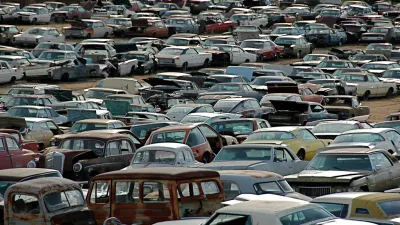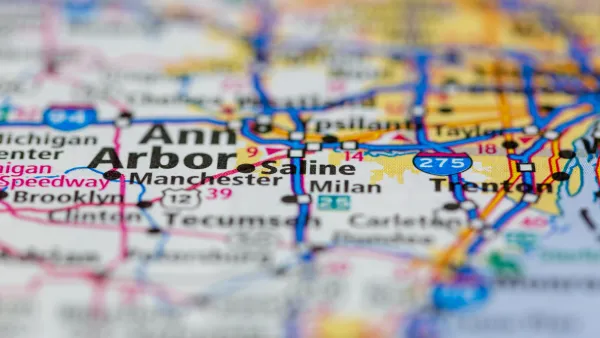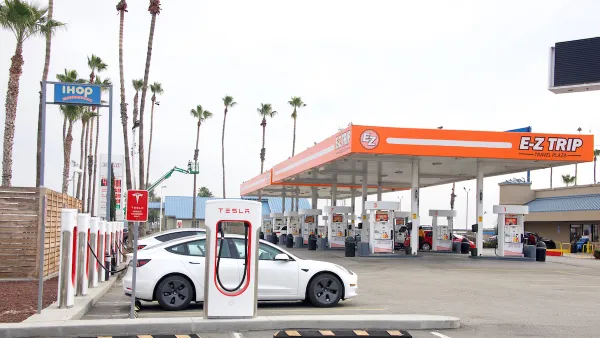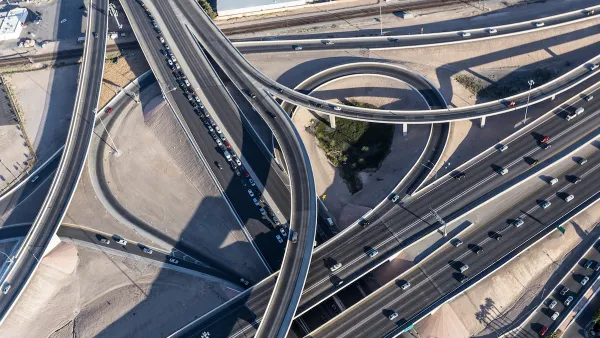The new report, "Who Pays for Roads? How the 'Users Pays' Myth Gets in the Way of Solutions to America’s Transportation Problems" exposes the widening gap between how Americans think we pay for roadways—through user fees—and how we actually do.

As Congress struggles to renew the federal transportation law, a new report from the U.S. Public Interest Research Group [U.S. PIRG] and Frontier Group finds that drivers currently pay less than half the total cost of roads, and argues that while increasing gas taxes could fill the shortfall, it would leave other problems unaddressed.
The new report, “Who Pays for Roads? How the ‘Users Pays’ Myth Gets in the Way of Solutions to America’s Transportation Problems” exposes the widening gap between how Americans think we pay for transportation – through gas taxes and other fees – and how we actually do.
The new report comes with just a month left before expiration of the federal transportation act, and with the federal Highway Trust Fund on the brink of insolvency. Revenues from gas taxes and other user fees this year are expected to come up $16 billion short of the level needed to maintain current federal transportation spending, leading to the need for urgent congressional action.
“Congress is stuck in an endless loop,” said Phineas Baxandall, Senior Analyst at U.S. PIRG and coauthor of the report. “Either Congress will have to raise gas taxes to the high levels that would be needed to fully pay for the costs of highways or it will have to admit that the ‘users pay’ system no longer exists and needs to be reformed.”
The new report pulls back the veil on the “users pay” myth, finding that:
· Gas taxes and other fees paid by drivers now cover less than half of road construction and maintenance costs nationally – down from more than 70 percent in the 1960s – with the balance coming chiefly from income, sales and property taxes and other levies on general taxpayers.
· General taxpayers at all levels of government now subsidize highway construction and maintenance to the tune of $69 billion per year – an amount exceeding the expenditure of general tax funds to support transit, bicycling, walking and passenger rail combined.
· Regardless of how much they drive, the average American household bears an annual financial burden of more than $1,100 in taxes and indirect costs from driving – over and above any gas taxes or other fees they pay that are connected with driving.
“The ‘users pay’ myth is deeply ingrained in U.S. transportation policy, shaping how billions of dollars in transportation funds are raised and spent each year,” said Tony Dutzik, co-author of the report and Senior Analyst at Frontier Group, a non-profit think tank. “More and more, though, all of us are bearing the cost of transportation in our tax bills, regardless of how much we drive.”
“We need to dispel the myth that user fees are paying for the building and maintenance of our road network. The reality is that these funds are barely covering a fraction of the cost,” said Gabe Klein, SVP of Fontinalis Partners, and former Commissioner of Transportation for Chicago and Washington, D.C. “The highest return on investment is on bike, pedestrian and transit projects,” he said.
State and federal policies often give priority to spending on highways based on the assumption that drivers pay the cost of roads through gas taxes and user fees. The report argues that, with the nation’s transportation needs changing and general taxpayers bearing an ever-greater share of the cost of transportation, America should instead invest transportation dollars in projects that are likely to deliver the greatest benefits.
Ordinary Americans agree. Nearly two-thirds of Americans believe it is appropriate to use gasoline tax revenue to support public transportation, according to a national study released last week by researchers at the Norman Mineta Transportation Institute. Other recent opinion polls suggest that Americans believe that the nation should give greater priority to transit, bicycling and walking in transportation spending.

National Parks Layoffs Will Cause Communities to Lose Billions
Thousands of essential park workers were laid off this week, just before the busy spring break season.

Retro-silient?: America’s First “Eco-burb,” The Woodlands Turns 50
A master-planned community north of Houston offers lessons on green infrastructure and resilient design, but falls short of its founder’s lofty affordability and walkability goals.

Delivering for America Plan Will Downgrade Mail Service in at Least 49.5 Percent of Zip Codes
Republican and Democrat lawmakers criticize the plan for its disproportionate negative impact on rural communities.

Test News Post 1
This is a summary

Test News Headline 46
Test for the image on the front page.

Balancing Bombs and Butterflies: How the National Guard Protects a Rare Species
The National Guard at Fort Indiantown Gap uses GIS technology and land management strategies to balance military training with conservation efforts, ensuring the survival of the rare eastern regal fritillary butterfly.
Urban Design for Planners 1: Software Tools
This six-course series explores essential urban design concepts using open source software and equips planners with the tools they need to participate fully in the urban design process.
Planning for Universal Design
Learn the tools for implementing Universal Design in planning regulations.
EMC Planning Group, Inc.
Planetizen
Planetizen
Mpact (formerly Rail~Volution)
Great Falls Development Authority, Inc.
HUDs Office of Policy Development and Research
NYU Wagner Graduate School of Public Service





























